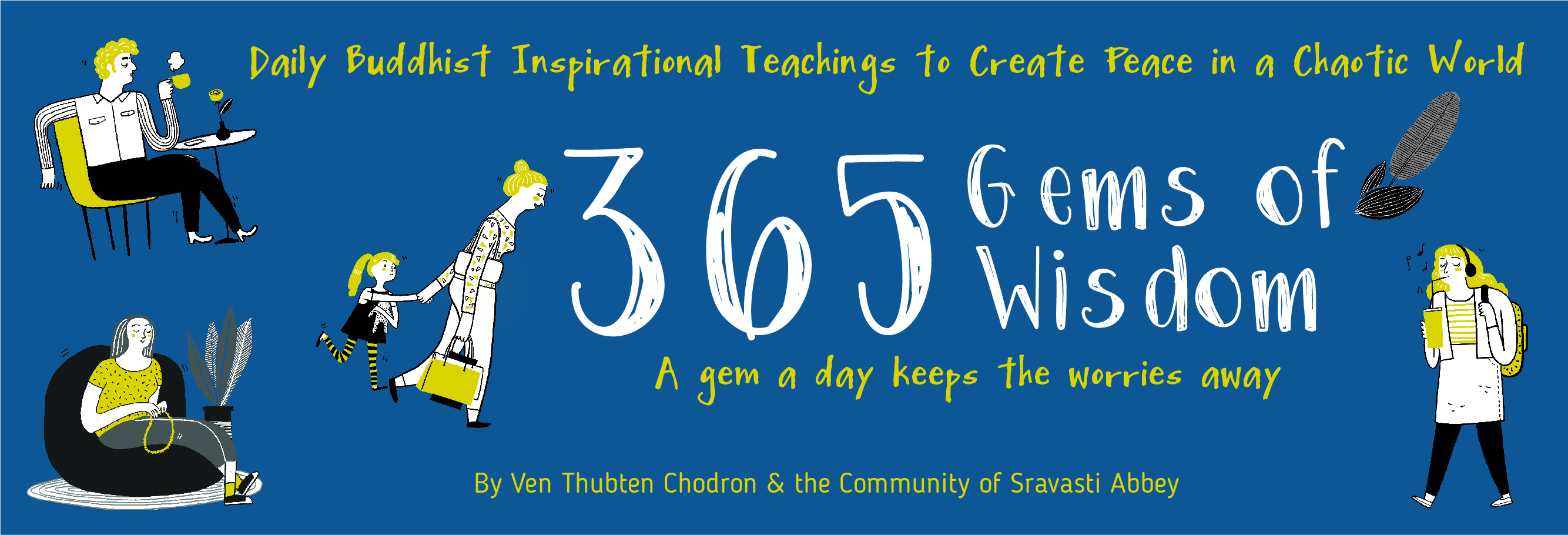December 6 : Working with Attachment to Food
There are a few ways to work with attachment to eating. One very effective way is thinking about what the food looks like after we have chewed it, as it goes through our digestive system, and out the other end. We can also think about its causes, like dirt and fertiliser, which we certainly do not consider appetising. This helps us see how food is not inherently existent food, nor is it inherently delicious. Offering our food to the Three Jewels also reduces attachment because we give it away and certainly would not want to be attached to what belongs to the Buddha.
Sometimes when people are new to the Dharma, it seems like food is their worst attachment. But they say that attachment to food is nothing compared to attachment to sex, reputation, love, praise, or approval. At one of the Western Buddhist Monastic gatherings, we were talking about the difficulties of training our minds. One Theravada monk talked about his attachment to mangoes while he was living in Thailand. I spoke next and said, “If working on my attachment to a mango was the biggest thing I had to do in my early years of training, that would have been a breeze. Instead, my teacher sent me to be the disciplinarian of macho Italian monks.” And then I talked about my desire for praise and approval while working with them, and not being blamed for things I did not do or having people write to my teacher to tell him that I was the worst thing that ever happened to the Dharma centre, simply because I wanted people to go to puja instead of work.
Focus on the kinds of attachment and anger that cause the most difficulties in your life, and gently work on your attachment to food. I have seen many people go to the extreme of not eating at all, which obviously is not healthy. Eating mindfully is very important, and there are many different ways to accomplish this. My friends at Cloud Mountain Retreat Center once told me that they could tell which Buddhist tradition was hosting a retreat there by the way people ate. The Zen people would walk in, sit down, chant, eat everything within five minutes, chant, and leave. The Vipassana people would walk very slowly, being mindful of all their steps, and chew very slowly, being mindful of every bite, so their meal lasted about forty-five minutes to an hour. The Tibetans would walk in, pray, eat, finish, and leave, all at a normal pace.
We can see that different traditions have different practices for dealing with attachment. The Zen people eat very quickly because there is no time to be attached to the food, and everybody must finish at the same time, so you do not want to be the last one. The Vipassana people lose their attachment by chewing the food so long they get bored with the sensation and the taste. But since our motivation for eating is really the key thing, we can eat at a normal speed if we visualise that we are offering the food to the Buddha, who is sending light throughout our body. In the Chinese tradition, you are supposed to keep the five contemplations in mind throughout the meal, so they could also be called the five mindfulnesses.
“365 Gems of Wisdom” e-book is out now!

